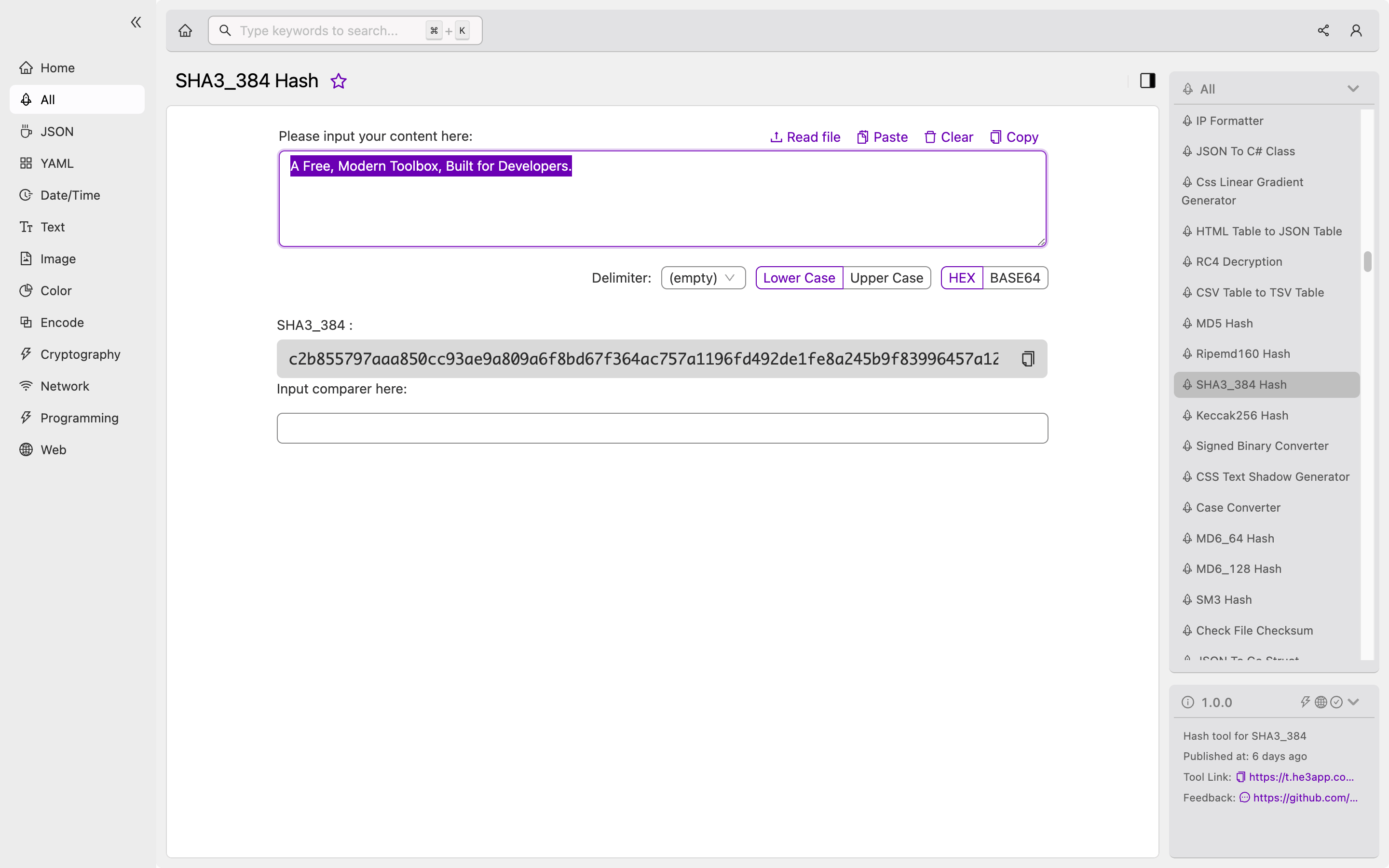Introduction
SHA3_384 Hash is a cryptographic hash function that generates a 384-bit message digest. It is part of the Secure Hash Algorithm 3 (SHA-3) family, which was developed by the National Institute of Standards and Technology (NIST) in 2015 as a replacement for the earlier SHA-2 family.
SHA3_384 Hash is designed for use in digital signatures, message authentication codes (MACs), and other security applications where data integrity is critical. In this article, we’ll take a closer look at how SHA3_384 Hash works and explore some of its key features and practical applications for developers.
How it Works
The SHA3_384 Hash algorithm takes an input message of any length and produces a fixed-sized 384-bit output. The input message is first padded with a one-bit followed by zero or more zero bits, so that its length is congruent to 896 modulo 1088. The padded message is then divided into blocks of 1088 bits, which are processed sequentially by the algorithm.
The processing consists of a series of rounds, each of which involves a permutation of the message bits and a XOR operation with a round constant. Each round generates a new state, which serves as the input for the next round. The final state is then truncated to produce the 384-bit output.
Code Snippet
Here’s a simple Python code snippet that demonstrates how to calculate the SHA3_384 hash of a message using the hashlib library:
import hashlib
message = b'This is a test message.'
hash_object = hashlib.sha3_384(message)
hash_hex = hash_object.hexdigest()
print(hash_hex)The output should be:
2b1c530a89f331b06069ab0ca009baaebaf00ed973d3ca3fae5b5dbc5c5c5f5b2ff350aba5c9dd48f5e76ef0fc7df1cKey Features
Here are some key features of the SHA3_384 Hash algorithm:
- Collision Resistance: The probability of finding two different messages that produce the same hash value is extremely low.
- Message Authentication: The hash value can be used to verify the authenticity of a message.
- Integrity Verification: Any changes to the input message will result in a completely different hash value.
- One-Way Function: It is computationally infeasible to determine the input message from its hash value.
Scenarios for Developers
Developers can use SHA3_384 Hash in a variety of scenarios, including:
- Password Hashing: Storing password hashes instead of plain text passwords is a best practice in security. SHA3_384 Hash can be used to generate password hashes with a high level of security.
- Digital Signatures: SHA3_384 Hash can be used to generate digital signatures, which are used to verify the authenticity and integrity of digital documents.
- Secure Data Transfer: SHA3_384 Hash can be used to ensure the integrity of data being transferred over a network.
Misconceptions and FAQs
Misconception: SHA3_384 Hash is uncrackable.
While SHA3_384 Hash is highly secure, it is not uncrackable. A determined attacker with sufficient resources could still potentially brute-force the hash function and discover the original message.
FAQ: Is SHA3_384 Hash faster than SHA-256?
No, SHA3_384 Hash is generally slower than SHA-256 due to its larger block size and number of rounds.
FAQ: Can SHA3_384 Hash be used for encryption?
No, SHA3_384 Hash is a one-way hash function and cannot be used for encryption. However, it can be used in conjunction with other cryptographic algorithms to achieve encryption.
Conclusion
SHA3_384 Hash is a highly secure cryptographic hash function that offers a high degree of data integrity and message authentication. Developers can use it to protect sensitive data and ensure the authenticity of digital documents. By understanding how SHA3_384 Hash works and its practical applications, developers can take steps to safeguard their applications and data against unauthorized access.
Or you can use SHA3_384 Hash tool in He3 Toolbox (https://t.he3app.com?f0eu ) easily.

